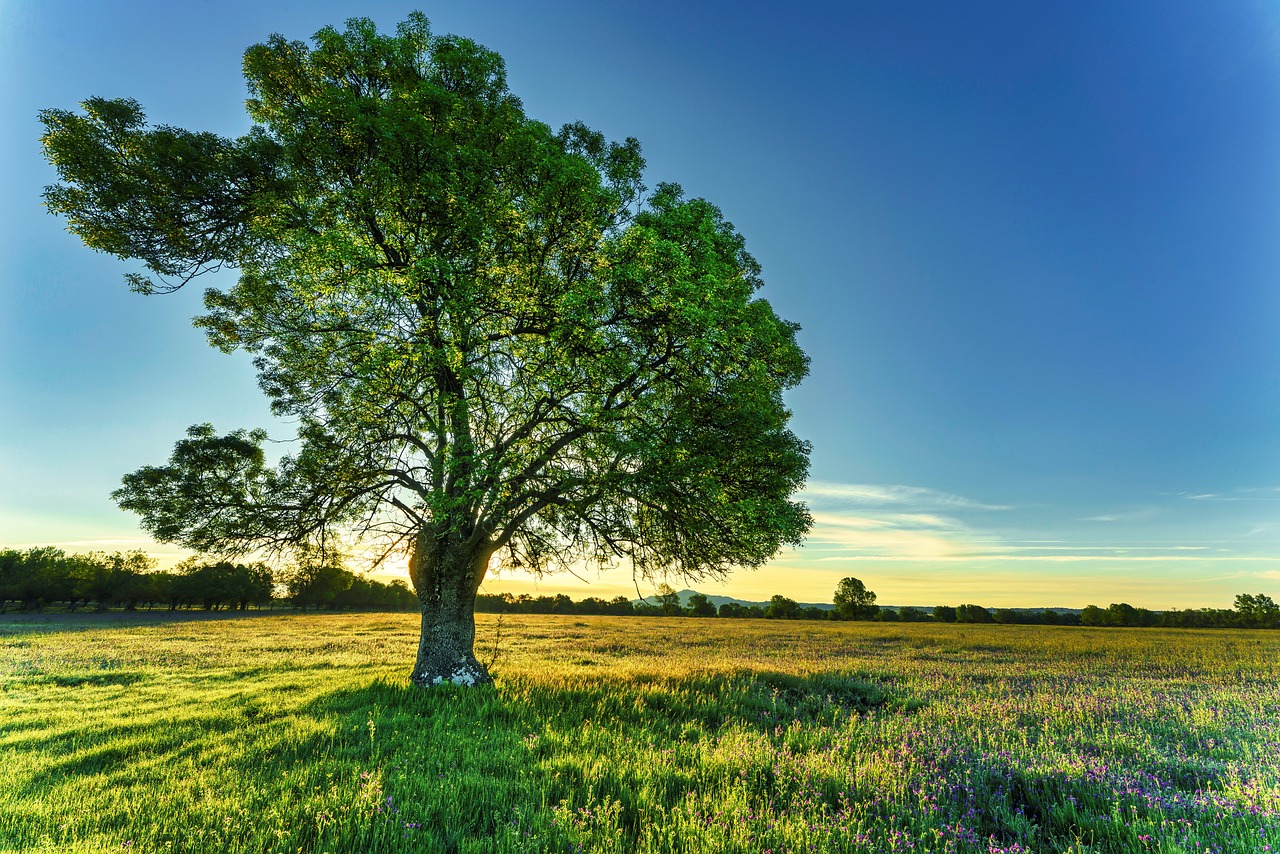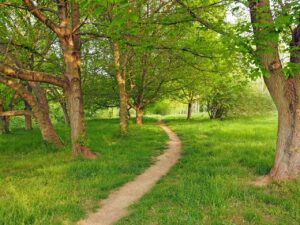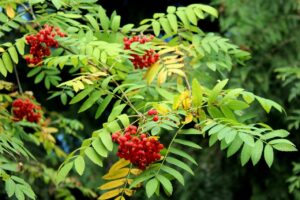Ash
Overview
The ash plant, encompassing species like Fraxinus excelsior and Fraxinus americana, thrives across various regions and offers ornamental, utilitarian, and medicinal benefits1 2^3 4 5. This deciduous tree, part of the Oleaceae family, not only beautifies landscapes but also contributes to cultural heritage and industrial applications. Ash is revered for both its robust timber and its storied place in history and ecology.

Characteristics
Known for its versatility in ecological systems, medicinal properties, and importance in woodcraft and culture.
Region
Typically found in Europe, Asia, and North America.
Natural Habitat
Commonly found in forests and woodlands.
Cultivation
Prefers full sun, requires moderate watering, and thrives in well-drained, fertile soils.
Uses and Benefits
The ash plant is a versatile and valuable resource, offering a range of practical uses and benefits. Its strong, elastic wood is highly sought-after for crafting durable tools and sports equipment4. Beyond its utility in woodworking, the ash also has medicinal applications. Certain species, such as the manna ash, produce a distinctive sap that is used to support overall health and well-being3.
The ash’s usefulness extends into the cultural realm as well. Its wood is prized for creating musical instruments, particularly drum shells, thanks to its resonant properties3. In some Asian regions, the Chinese ash is cultivated for its production of Chinese white wax, a valuable substance with various applications4.
Some of the key benefits and uses of the ash plant include:
- Durable, elastic wood for tool and sports equipment crafting
- Medicinal properties in the sap of certain species, like the manna ash
- Resonant wood for musical instruments, especially drum shells
- Production of valuable Chinese white wax by the Chinese ash species
The ash plant stands as a testament to the incredible versatility and generosity of nature, providing humans with a wide array of practical, medicinal, and cultural benefits.

Cultivation Tips
To successfully cultivate an ash tree, select a planting site with well-draining soil. Ash trees struggle in compacted earth or when their roots are disturbed. These trees can adapt to various climates, thriving best within USDA hardiness zones 3A to 9A for the Fraxinus americana (American ash) and 5A to 8A for the Fraxinus excelsior (common ash)1 5.
Be cautious of overly wet conditions, as excessive moisture can promote the growth of diseases such as anthracnose, yellows, and rust. To minimize the risk of these issues:
- Regularly clean up fallen leaves to prevent the spread of infection5
- Ensure proper air circulation around the tree
- Avoid overwatering and maintain consistent soil moisture
During the winter months, the common ash showcases dormant leaf buds, adding a unique and attractive element to the landscape when other plants have shed their foliage1.
To keep your ash trees healthy and visually appealing, conduct regular inspections and perform necessary maintenance tasks, such as:
- Pruning dead, damaged, or crossed branches
- Fertilizing as needed based on soil tests
- Monitoring for signs of pests or disease
By following these cultivation tips, you can ensure that your ash trees remain a robust and elegant presence in your garden for years to come.
Seasonal Considerations
To cultivate the ash tree, choose a location with well-draining soil as these trees don’t fare well with compacted earth or disrupted roots. They can thrive across a range of climates, ideally within USDA hardiness zones 3A to 9A for the Fraxinus americana and 5A to 8A for the Fraxinus excelsior1 5.
Be mindful of wet conditions, as dampness can exacerbate diseases like anthracnose, yellows, and rust. To keep these at bay:
- Clean up any fallen leaves to prevent the spread of infection5.
- Regularly inspect your ash trees for signs of disease or pest damage.
- Prune dead, damaged, or diseased branches to promote healthy growth.
During the winter, the Fraxinus excelsior displays dormant leaf buds, which add a unique touch to the landscape when other plants are bare1. Regular inspections and maintenance can help ensure your ash trees remain a robust and elegant presence in your garden.

Issues and Troubleshooting
Ash trees, while resilient, can encounter various challenges in the garden. Anthracnose, a fungal disease, causes unsightly leaf spots that can mar the tree’s appearance. Ash yellows, another fungal condition, leads to premature leaf drop, weakening the tree’s overall health. Rust, yet another fungal issue, results in damaged leaves and an unhealthy appearance.
One of the most severe problems facing ash trees is ash dieback, a fungal condition that can severely weaken and even kill affected trees2 4. This disease has become a significant concern for gardeners and nature enthusiasts alike.
To help prevent these issues and maintain a healthy ash tree, consider the following tips:
- Keep the area around the tree clean by regularly removing fallen leaves, which can harbor disease spores.
- Ensure good air circulation around the tree by pruning congested branches and avoiding planting too close to other vegetation.
- Avoid soil compaction around the tree’s extensive root system, as this can hinder nutrient absorption and weaken the tree’s defenses.
By following these essential steps, you can help your ash tree remain healthy and resilient in the face of potential challenges5. Regularly monitoring your tree for signs of disease and taking prompt action when necessary will go a long way in ensuring its long-term health and beauty in your garden.
History and Folklore
Ash trees, with their towering presence and strong branches, have deeply rooted themselves not only in the soil but also in the tapestry of human history and mythology.
In Norse lore, the cosmic World Tree Yggdrasil, believed to be an ash, serves as a powerful symbol connecting the heavens, earth, and underworld. Its resilience and lofty height made it a beacon of strength, bridging realms in the Norse cosmology.
Celtic folklore also holds the ash in high regard, considering it a sacred tree imbued with protective and enchanting properties. The Celts often planted ash trees near their homes, believing they would act as guardians to ward off evil spirits and misfortune.
Throughout the ages, the ash tree has stood as a silent witness to the unfolding of human culture. Its expansive canopy has provided leafy havens for countless generations, offering shelter and shade to those who sought solace beneath its boughs 2.
The ash’s enduring presence in our myths, legends, and daily lives is a testament to the deep connection between humans and the natural world. As we continue to navigate our own stories, the ash tree remains a steadfast companion, reminding us of the power and wisdom that can be found in the quiet strength of nature.
References
1. ENH423/ST264: Fraxinus excelsior: Common Ash, https://edis.ifas.ufl.edu/publication/ST264
2. Fraxinus excelsior, https://en.wikipedia.org/wiki/Fraxinus_excelsior
3. Fraxinus, https://en.wikipedia.org/wiki/Fraxinus
4. Ash | Description, Uses, Diseases, Pests, & Major Species, https://www.britannica.com/plant/ash-tree
5. ENH420/ST261: Fraxinus americana: White Ash, https://edis.ifas.ufl.edu/publication/ST261
Nicolas Duval
Nicolas is a passionate advocate for nature and the art of wildcrafting. His dedication shines through in Wildcraftia, a website he meticulously crafted to serve as a haven for nature enthusiasts worldwide. Driven by a deep appreciation for nature’s connection to humanity, Nicolas embarked on his journey in 2011 with SmokableHerbs, a platform showcasing his love for nature’s bounty. Building upon this foundation, he established Smokably, a thriving online store offering premium herbs and blends to a global audience.
